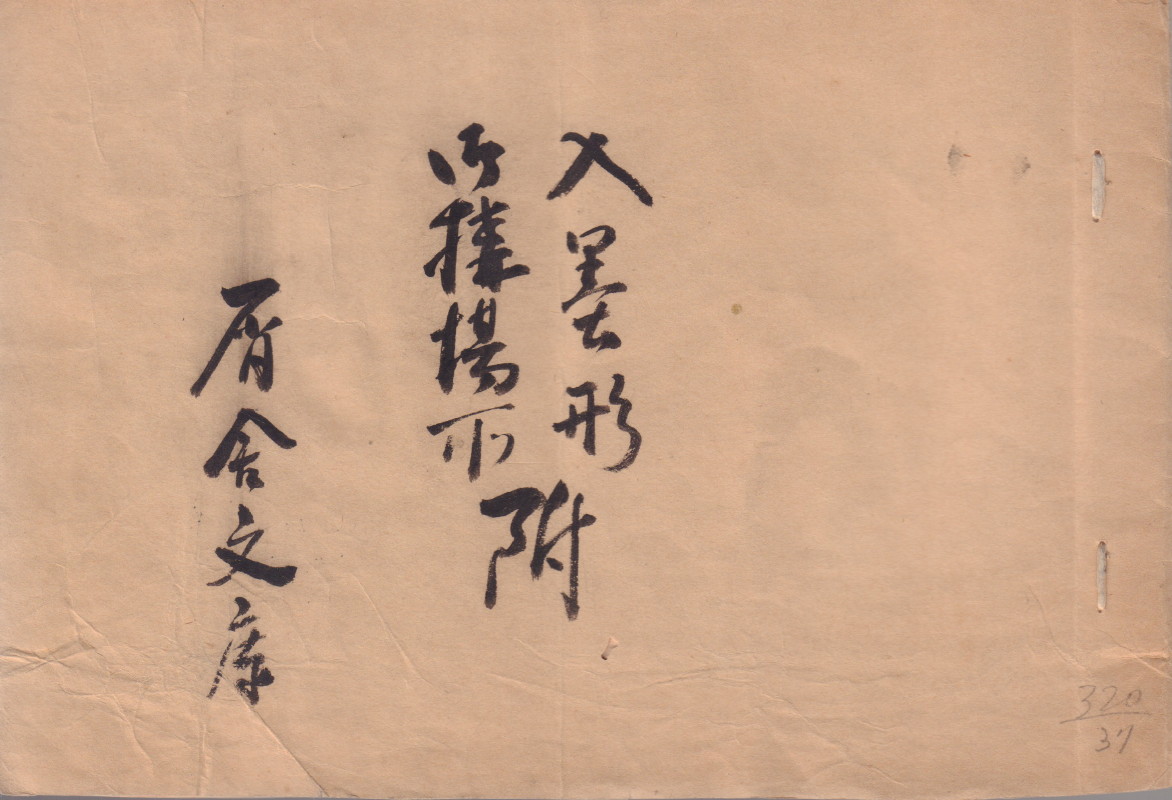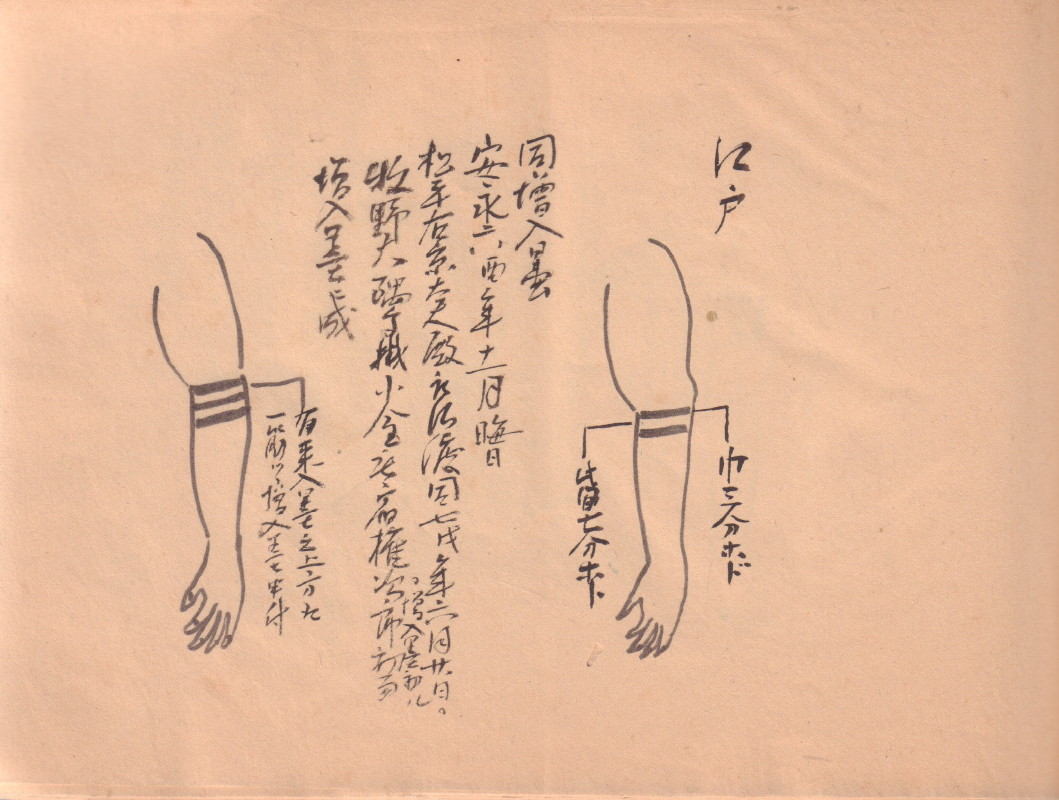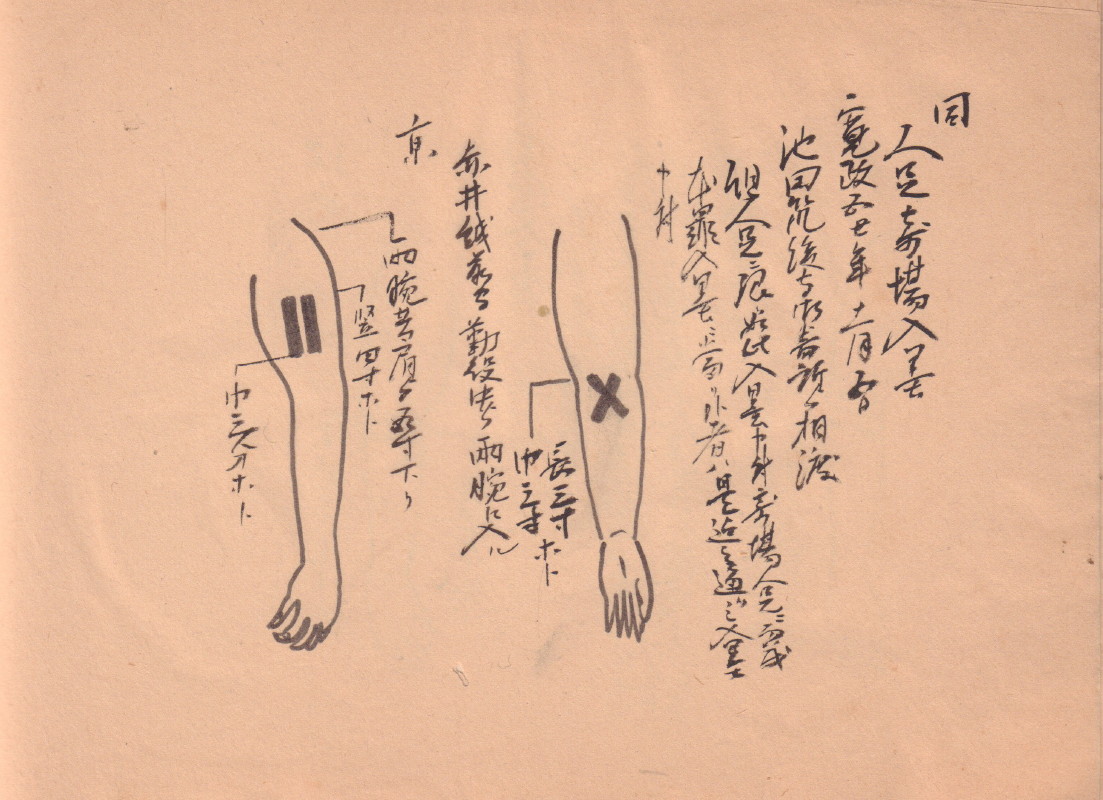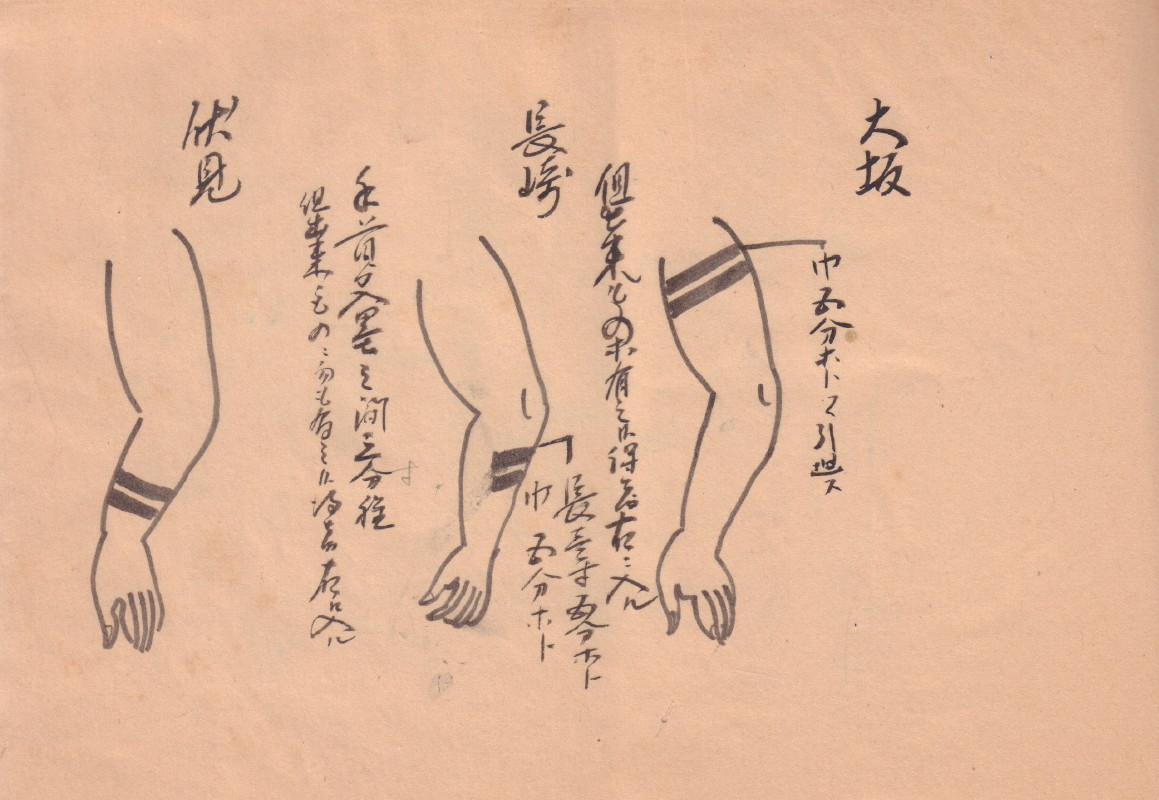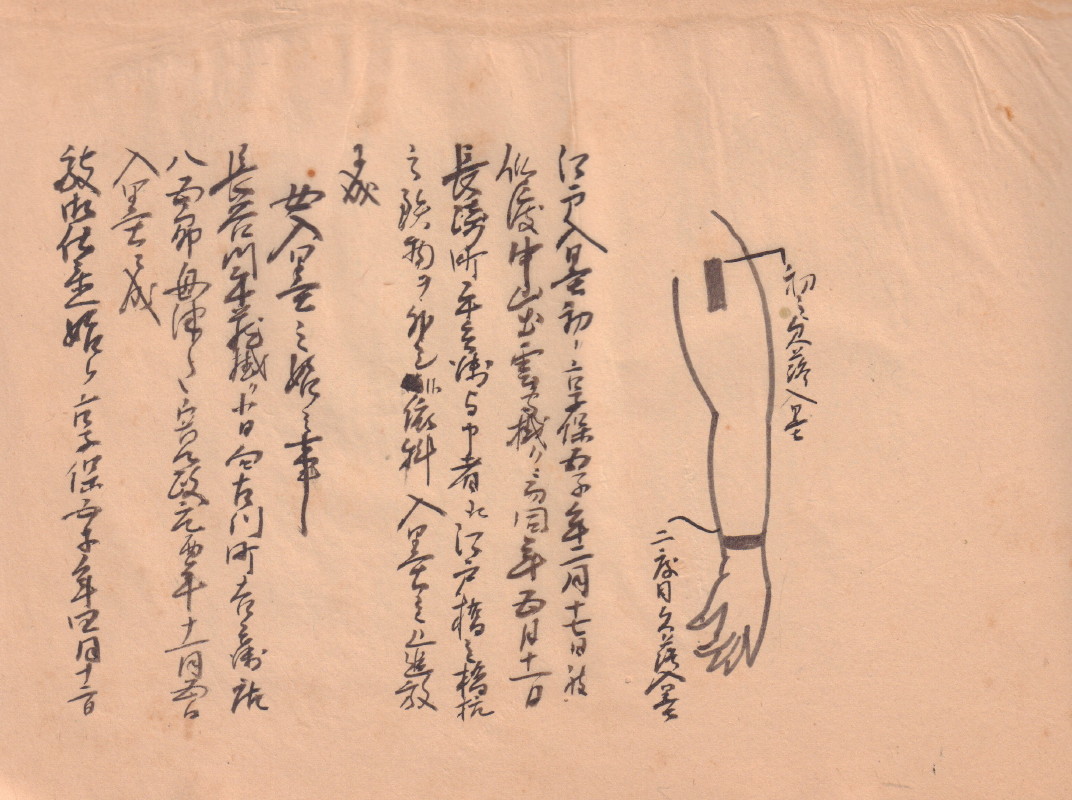IREZUMI-gata: Tsuketari Okamai Basho.
(No place): No printing details, no date (c.1890). A fascinating manuscript on the Japanese practice of tattooing criminals. From 1720 the tattooing of criminals became an official punishment and replaced the amputation of the nose and the ears. The criminal received a ring tattoo around the arm for each offense or, in some districts, a character tattoo on his forehead. Tattooing criminals was continued until 1870, when it was abolished by the new Meiji government of the Japanese Emperor. This volume illustrates fifteen of the arm designs used to mark and identify criminals in a number of Japanese prefectures. Individuals who received tattoos were often ostracized from their friends and family as well as being denied all participation in community life. The volume also records details of areas that tattooed criminals were banned from entering and a statement regarding the areas the criminals were prohibited from leaving. By the end of the seventeenth century penal tattooing was replaced by other forms of punishment due to the rise in decorative tattoos. With the availability of decorative cover-ups, criminals were able to hide previous tattoos given due to offenses. This gave rise to the association with tattooing and organized crime, particularly the Yakuza. A very good copy in original sewn wrappers with title in brush and ink to front cover. Seven leaves of folded sheets, measuring approx. 17cm by 24.8cm. Tattooing manuscripts, particularly of this period, are exceptionally scarce.
Original price was: $2,500.00.$2,000.00Current price is: $2,000.00.
1 in stock


